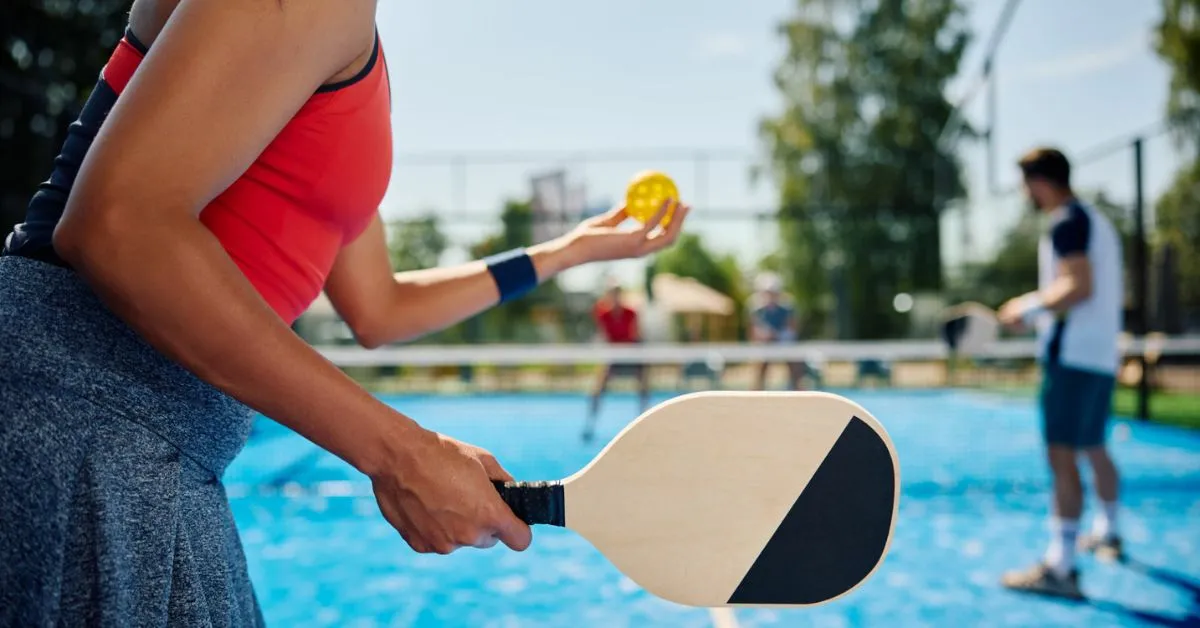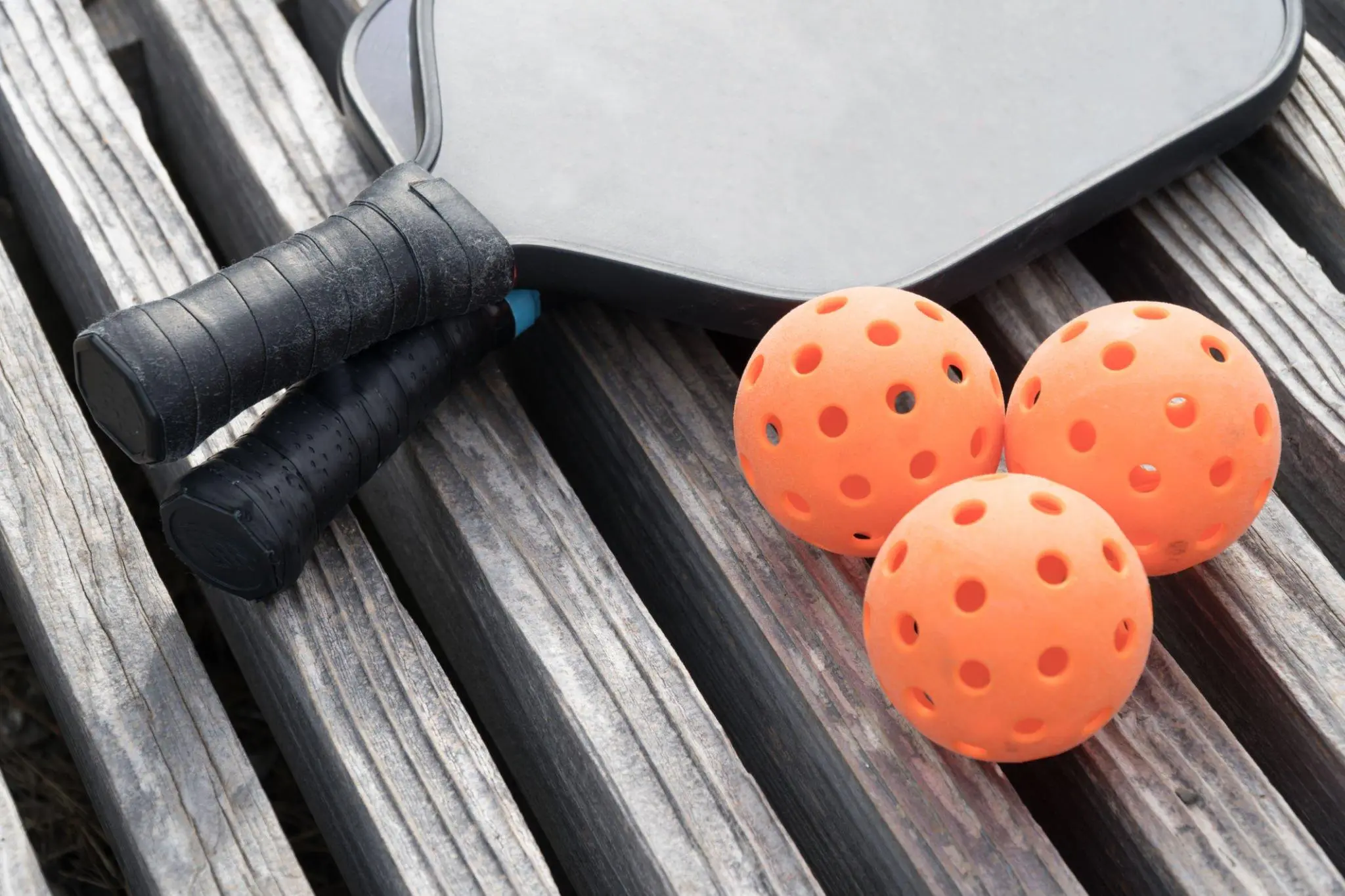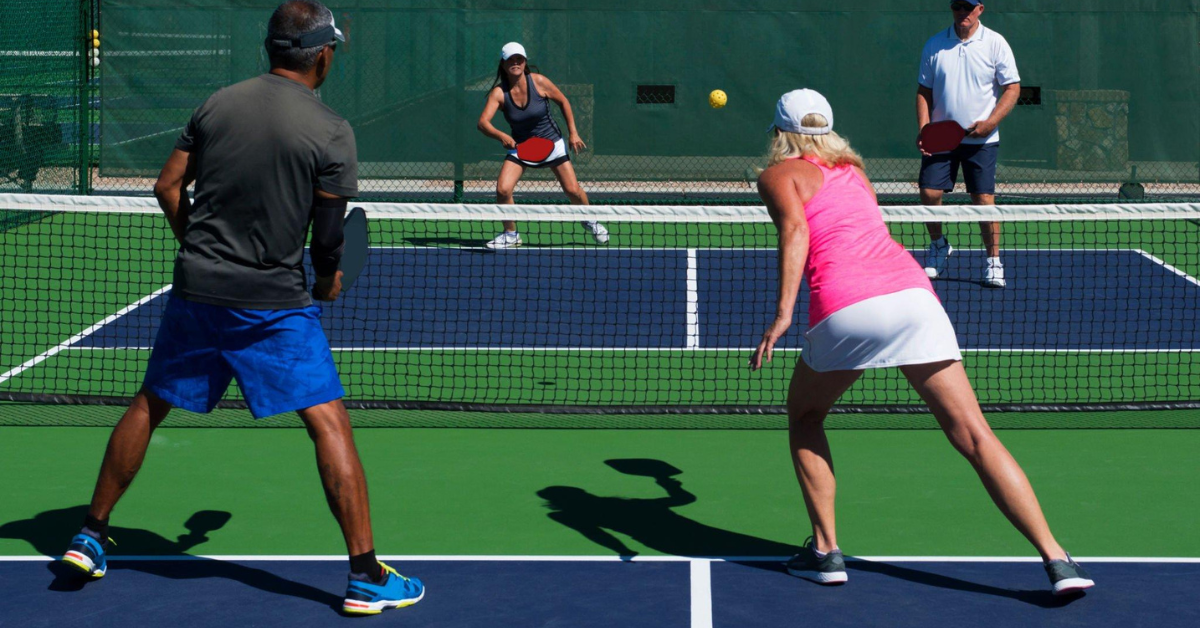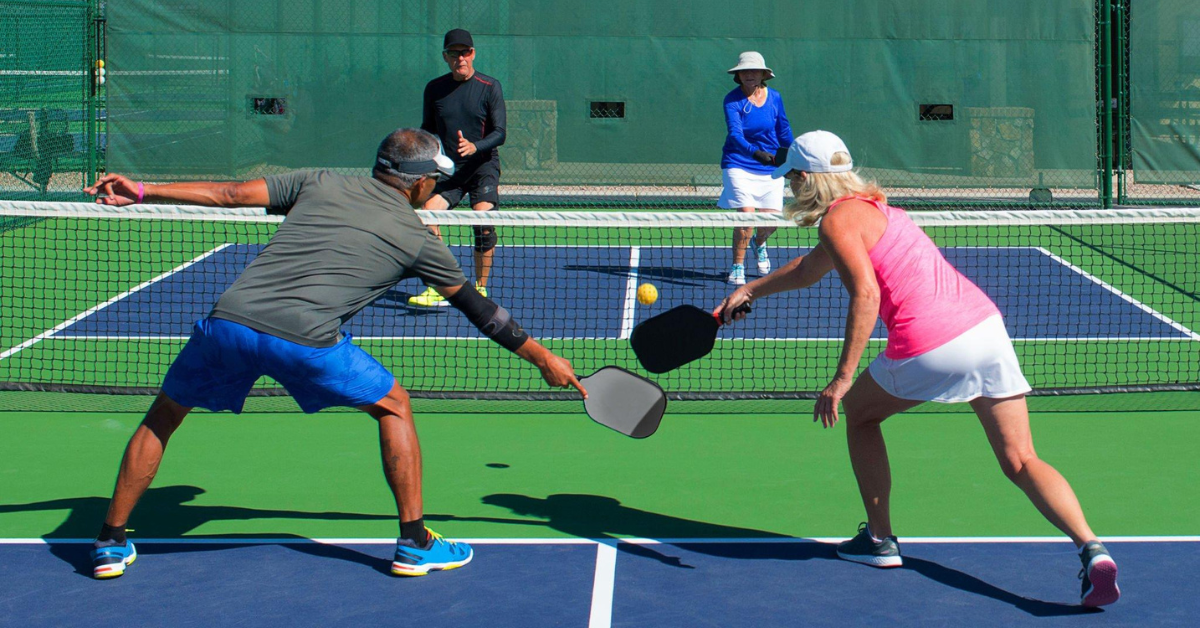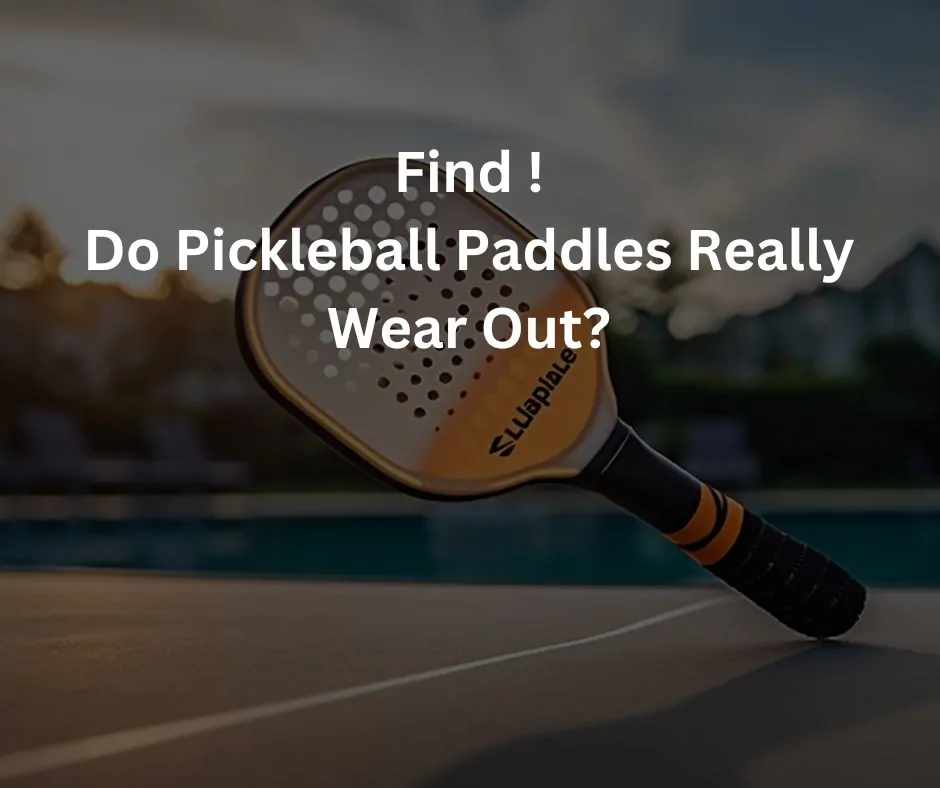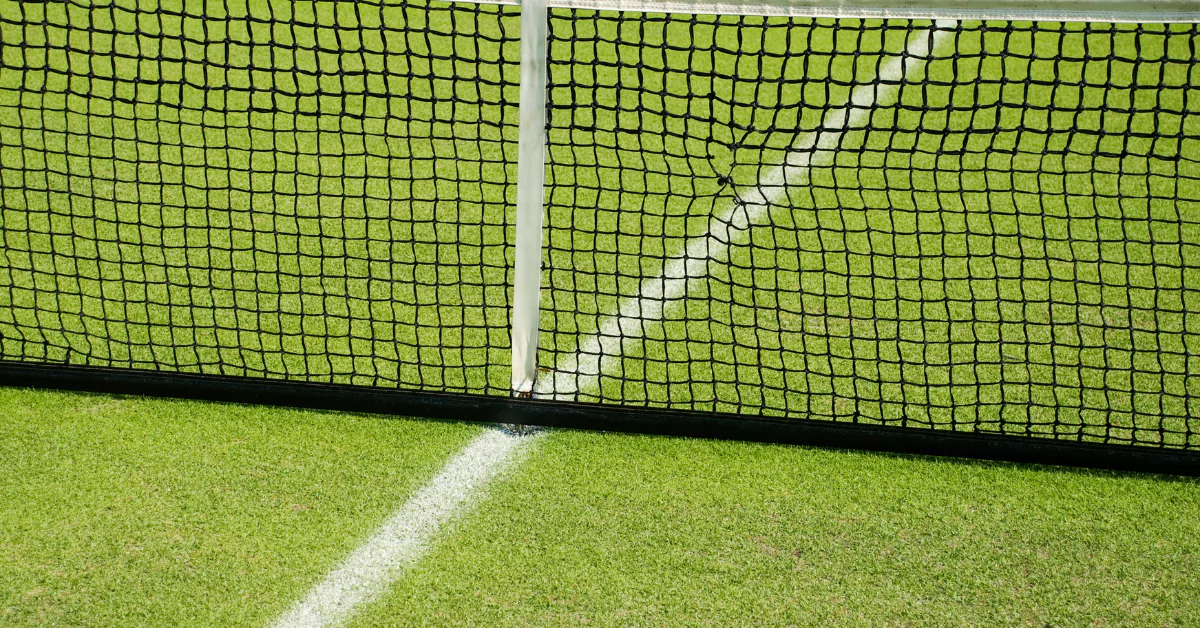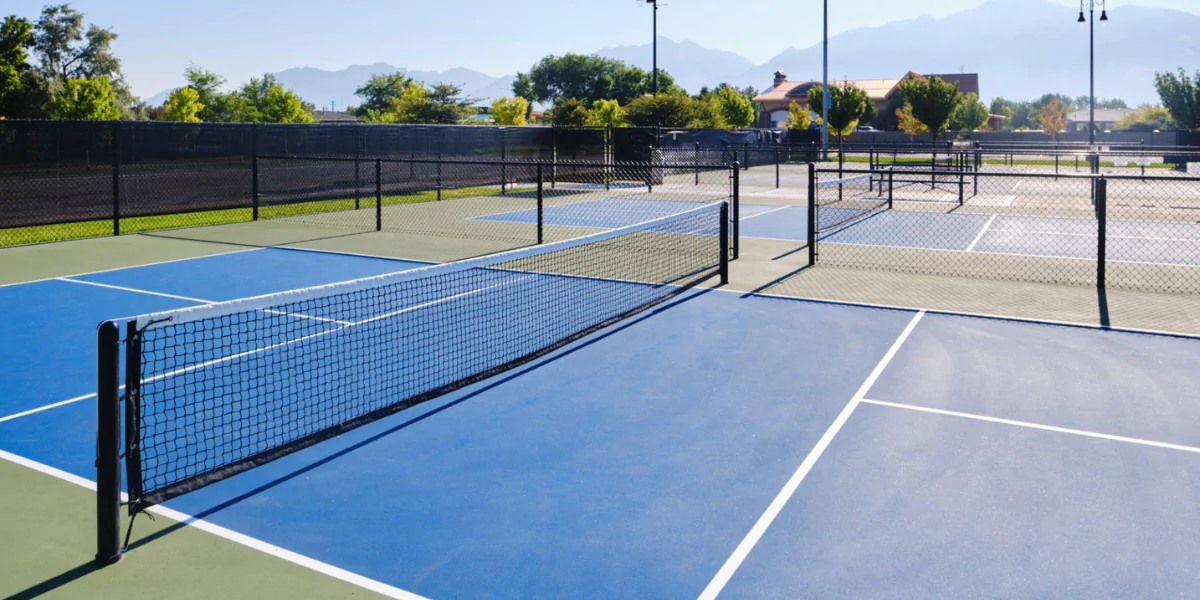In the rhythmic dance of strategy and finesse that is pickleball, unlocking the secrets of pickleball shots becomes a transformative journey. Imagine a court where every stroke echoes with precision, a symphony of mastery. This blog serves as your guide, unveiling the artistry behind 23 game-changing techniques that will propel your pickleball prowess to new heights.
From the initial serve, where spin and velocity converge in a harmonious crescendo, to the nimble footwork executing a strategic dance across the court, every move is a brushstroke in the portrait of victory. Here, we delve beyond the surface, dissecting the intricacies of dinks, drives, and drops, exploring the nuanced beauty concealed within the realm of pickleball strategy.
As the ball bounces with an almost musical rhythm, the court transforms into a canvas where players paint their triumphs. Are you ready to embark on a journey where every stroke is a calculated step toward victory? Picture yourself mastering the art of “Pickleball Shots,” where the flick of a wrist and the angle of a paddle can be the deciding factors. Join us as we unravel the secrets, ignite your passion, and elevate your game to unparalleled heights. The court is set, the challenge beckons – seize it with the mastery of 23 game-changing techniques and redefine your pickleball narrative.
We will start with the basics and then move on to more advanced shots and skills. By the end of this article, you will have a better understanding of how to use different Pickleball shots to improve your game and have more fun on the court.
The Fundamentals: Basic Pickleball Strokes
Before we dive into the specific Pickleball shot names, let us first review the basic Pickleball strokes that are the foundation of any shot. These are the strokes that you need to master in order to execute any shot effectively and consistently. They are also the strokes that you will use most frequently in your game. Here are the basic Pickleball strokes that you need to know:
1. Basic Pickleball Strokes
- The Forehand Stroke: This is the most common and natural stroke in Pickleball. It is performed by swinging the paddle from your dominant side across your body to hit the ball. The forehand stroke can be used for any type of shot, such as a drive, a lob, a dink, or a smash. To perform a good forehand stroke, you need to have a proper grip, stance, swing, and follow-through. Here are some tips for a better forehand stroke:
- Grip the paddle with a continental grip, which is similar to holding a hammer. The paddle face should be perpendicular to the ground and the edge of the paddle should point towards the net.
- Stand in a ready position, facing the net, with your feet shoulder-width apart and your knees slightly bent. Keep your paddle in front of your chest, with your dominant arm slightly bent and your non-dominant arm pointing towards the ball.
- Swing the paddle from low to high, with a smooth and fluid motion. Keep your eye on the ball and hit it in front of your body, at the highest point of the bounce. Aim for the center of the paddle face and hit the ball with a slight upward angle.
- Follow through with your swing, extending your arm towards your target. Finish with your paddle over your shoulder and your body facing the direction of the shot.
- The Backhand Stroke: This is the stroke that you use when the ball comes to your non-dominant side. It is performed by swinging the paddle from your non-dominant side across your body to hit the ball.
The backhand stroke can also be used for any type of shot, but it is usually less powerful and accurate than the forehand stroke. To perform a good backhand stroke, you need to have a similar grip, stance, swing, and follow-through as the forehand stroke, but with some adjustments.
Here are some tips for a better backhand stroke:
Grip the paddle with the same continental grip, but rotate your hand slightly so that the edge of the paddle is parallel to the ground and the paddle face is angled slightly downwards.
Stand in a ready position, facing the net, with your feet shoulder-width apart and your knees slightly bent. Keep your paddle in front of your chest, with your non-dominant arm slightly bent and your dominant arm pointing towards the ball.
Swing the paddle from low to high, with a smooth and fluid motion. Keep your eye on the ball and hit it in front of your body, at the highest point of the bounce. Aim for the center of the paddle face and hit the ball with a slight upward angle.
Follow through with your swing, extending your arm towards your target. Finish with your paddle over your shoulder and your body facing the direction of the shot.
You may also Like: pickleball strokes and strategies
2. The Pickleball Groundstroke
The groundstroke is the most basic and common shot in Pickleball. It is a shot that is hit after the ball bounces on the ground. The groundstroke can be either a forehand or a backhand stroke, depending on which side the ball comes to. The groundstroke can be used for offensive or defensive purposes, depending on the speed, direction, and placement of the shot. Here are some tips for a better groundstroke:
- Use a continental grip for both forehand and backhand groundstrokes.
- Stand in a ready position, facing the net, with your feet shoulder-width apart and your knees slightly bent. Keep your paddle in front of your chest, with your arm slightly bent and your other arm pointing towards the ball.
- Step forward with your foot that is on the same side as the paddle as you swing the paddle from low to high. Keep your eye on the ball and hit it in front of your body, at the highest point of the bounce. Aim for the center of the paddle face and hit the ball with a slight upward angle.
- Follow through with your swing, extending your arm towards your target. Finish with your paddle over your shoulder and your body facing the direction of the shot.
- Use the groundstroke to hit the ball deep and low to your opponent’s court, making them move and keeping them away from the net. You can also use the groundstroke to hit the ball cross-court or down the line, depending on the position and movement of your opponent. You can also add some spin to the ball by brushing the paddle face over the ball, creating more curve and bounce.
3. The Volley in Pickleball
The volley is a shot that is hit before the ball bounces on the ground. The volley can be either a forehand or a backhand stroke, depending on which side the ball comes to. The volley can be used for offensive or defensive purposes, depending on the speed, direction, and placement of the shot. Here are some tips for a better volley:
- Use a continental grip for both forehand and backhand volleys.
- Stand in a ready position, facing the net, with your feet shoulder-width apart and your knees slightly bent. Keep your paddle in front of your chest, with your arm slightly bent and your other arm pointing towards the ball.
- Step forward with your foot that is on the same side as the paddle as you swing the paddle from high to low. Keep your eye on the ball and hit it in front of your body, before it bounces. Aim for the center of the paddle face and hit the ball with a slight downward angle.
- Follow through with your swing, extending your arm towards your target. Finish with your paddle below your waist and your body facing the direction of the shot.
- Use the volley to hit the ball fast and hard to your opponent’s court, making them react quickly and giving them less time to prepare. You can also use the volley to hit the ball cross-court or down the line, depending on the position and movement of your opponent. You can also add some spin to the ball by brushing the paddle face over the ball, creating more curve and bounce.
Mastering Pickleball Volleys: Strategies For Singles And Doubles Success
4. The Dink Shot
The dink shot is a soft and short shot that is hit over the net and lands in the non-volley zone, also known as the kitchen. The dink shot can be either a forehand or a backhand stroke, depending on which side the ball comes to.
The dink shot can be used for offensive or defensive purposes, depending on the speed, direction, and placement of the shot. Here are some tips for a better dink shot:
- Use a continental grip for both forehand and backhand dink shots.
- Stand in a ready position, facing the net, with your feet shoulder-width apart and your knees slightly bent. Keep your paddle in front of your chest, with your arm slightly bent and your other arm pointing towards the ball.
- Step forward with your foot that is on the same side as the paddle as you swing the paddle from high to low. Keep your eye on the ball and hit it in front of your body, before it bounces. Aim for the center of the paddle face and hit the ball with a slight downward angle.
- Follow through with your swing, extending your arm towards your target. Finish with your paddle below your waist and your body facing the direction of the shot.
- Use the dink shot to hit the ball softly and gently over the net, making it land in the non-volley zone of your opponent’s court. You can also use the dink shot to hit the ball cross-court or down the line, depending on the position and movement of your opponent. You can also add some spin to the ball by brushing the paddle face over the ball, creating more curve and bounce.
Also Read: Dinking In Pickleball | Dominate Your Opponents With These Tips
5. Pickleball Shots Overview
The groundstroke, the volley, and the dink shot are the basic Pickleball shots that you need to master in order to play the game well. However, there are many other types of shots that you can use to enhance your game and have more fun on the court. In the next section, we will explore some of the more advanced and specific Pickleball shot names, techniques, and strategies that you can use to improve your game and have more fun on the court.
Serving and Returning: Key Elements of Pickleball
One of the most important aspects of Pickleball is the serve and the return of serve. These are the shots that start every rally and set the tone for the rest of the point. The serve and the return of serve can be used to gain an advantage over your opponent, or to neutralize their advantage. Here are some of the more advanced and specific Pickleball shot names, techniques, and strategies that you can use to improve your serve and return of serve:
6. The Pickleball Serve
The serve is the shot that initiates every rally in Pickleball. It is performed by hitting the ball with an underhand stroke from behind the baseline, diagonally across the court, into the opposite service court. The serve must clear the net and land within the boundaries of the service court, otherwise it is a fault. The serve can be either a forehand or a backhand stroke, depending on your preference and comfort. The serve can be used to create pressure on your opponent, or to set up your next shot. Here are some tips for a better serve:
- Use a continental grip for both forehand and backhand serves.
- Stand in a ready position, facing the net, with your feet shoulder-width apart and your knees slightly bent. Keep your paddle in front of your chest, with your arm slightly bent and your other arm holding the ball.
- Toss the ball slightly in front of you and slightly above your waist. Swing the paddle from low to high, with a smooth and fluid motion. Keep your eye on the ball and hit it with the center of the paddle face, with a slight upward angle. Do not swing too hard or too fast, as this may cause you to lose control and accuracy.
- Follow through with your swing, extending your arm towards your target. Finish with your paddle over your shoulder and your body facing the direction of the serve.
- Use the serve to hit the ball deep and low to your opponent’s court, making them move and keeping them away from the net. You can also use the serve to hit the ball cross-court or down the line, depending on the position and movement of your opponent. You can also add some spin to the ball by brushing the paddle face over the ball, creating more curve and bounce. You can also vary the speed, direction, and placement of your serve to keep your opponent guessing and off balance.
7. The Pickleball Lob
The lob is a shot that is hit high and deep over your opponent’s head, making them retreat to the baseline. The lob can be either a forehand or a backhand stroke, depending on which side the ball comes to. The lob can be used for offensive or defensive purposes, depending on the situation and the intention of the shot. Here are some tips for a better lob:
- Use a continental grip for both forehand and backhand lobs.
- Stand in a ready position, facing the net, with your feet shoulder-width apart and your knees slightly bent. Keep your paddle in front of your chest, with your arm slightly bent and your other arm pointing towards the ball.
- Swing the paddle from low to high, with a smooth and fluid motion. Keep your eye on the ball and hit it with the center of the paddle face, with a high upward angle. Do not swing too hard or too fast, as this may cause you to hit the ball out of bounds or into the net.
- Follow through with your swing, extending your arm towards your target. Finish with your paddle over your shoulder and your body facing the direction of the lob.
- Use the lob to hit the ball high and deep over your opponent’s head, making them retreat to the baseline. You can also use the lob to hit the ball cross-court or down the line, depending on the position and movement of your opponent. You can also add some spin to the ball by brushing the paddle face over the ball, creating more curve and bounce. You can also vary the speed, direction, and placement of your lob to catch your opponent off guard and create an opening for your next shot.
8. The Cross-Court Dink
The cross-court dink is a variation of the dink shot that is hit diagonally across the court, into the opposite non-volley zone. The cross-court dink can be either a forehand or a backhand stroke, depending on which side the ball comes to.
The cross-court dink can be used for offensive or defensive purposes, depending on the speed, direction, and placement of the shot. Here are some tips for a better cross-court dink:
- Use a continental grip for both forehand and backhand cross-court dinks.
- Stand in a ready position, facing the net, with your feet shoulder-width apart and your knees slightly bent. Keep your paddle in front of your chest, with your arm slightly bent and your other arm pointing towards the ball.
- Swing the paddle from high to low, with a smooth and fluid motion. Keep your eye on the ball and hit it with the center of the paddle face, with a slight downward angle. Do not swing too hard or too fast, as this may cause you to hit the ball out of bounds or into the net.
- Follow through with your swing, extending your arm towards your target. Finish with your paddle below your waist and your body facing the direction of the cross-court dink.
- Use the cross-court dink to hit the ball softly and gently over the net, making it land in the opposite non-volley zone of your opponent’s court. You can also use the cross-court dink to hit the ball cross-court or down the line, depending on the position and movement of your opponent.
You can also add some spin to the ball by brushing the paddle face over the ball, creating more curve and bounce. You can also vary the speed, direction, and placement of your cross-court dink to create angles and openings for your next shot.
9. The Pickleball Drive
The drive is a shot that is hit fast and low over the net, making it bounce deep in your opponent’s court. The drive can be either a forehand or a backhand stroke, depending on which side the ball comes to. The drive can be used for offensive or defensive purposes, depending on the situation and the intention of the shot. Here are some tips for a better drive:
- Use a continental grip for both forehand and backhand drives.
- Stand in a ready position, facing the net, with your feet shoulder-width apart and your knees slightly bent. Keep your paddle in front of your chest, with your arm slightly bent and your other arm pointing towards the ball.
- Swing the paddle from low to high, with a smooth and fluid motion. Keep your eye on the ball and hit it with the center of the paddle face, with a slight upward angle. Swing hard and fast, generating power and speed from your hips and shoulders.
- Follow through with your swing, extending your arm towards your target. Finish with your paddle over your shoulder and your body facing the direction of the drive.
- Use the drive to hit the ball fast and low over the net, making it bounce deep in your opponent’s court. You can also use the drive to hit the ball cross-court or down the line, depending on the position and movement of your opponent.
10. The Block in Pickleball
The block is a shot that is used to counter a fast and hard shot from your opponent, such as a drive or a smash. The block is performed by holding the paddle in front of your body and letting the ball hit the paddle, without swinging or moving the paddle.
The block can be either a forehand or a backhand stroke, depending on which side the ball comes to. The block can be used for defensive or offensive purposes, depending on the situation and the intention of the shot. Here are some tips for a better block:
- Use a continental grip for both forehand and backhand blocks.
- Stand in a ready position, facing the net, with your feet shoulder-width apart and your knees slightly bent. Keep your paddle in front of your chest, with your arm slightly bent and your other arm pointing towards the ball.
- Hold the paddle firmly and steady, with the paddle face perpendicular to the ground and the edge of the paddle pointing towards the net. Do not swing or move the paddle, but let the ball hit the paddle and bounce back to your opponent’s court. Absorb the impact of the ball with your arm and wrist, and keep your eye on the ball.
- Use the block to return a fast and hard shot from your opponent, such as a drive or a smash. You can also use the block to direct the ball to a specific spot in your opponent’s court, such as the non-volley zone or the sidelines. You can also add some spin to the ball by tilting the paddle face slightly, creating more curve and bounce. You can also vary the speed, direction, and placement of your block to catch your opponent off guard and create an opening for your next shot.
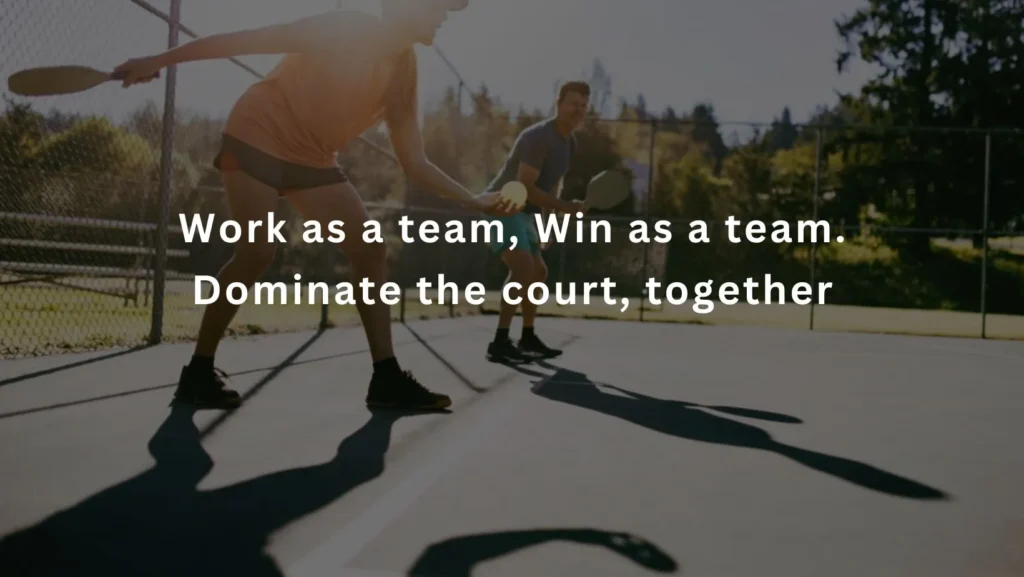
11. The Deep Return of Serve
The deep return of serve is a shot that is used to counter a serve from your opponent, by hitting the ball deep and low to your opponent’s court, making them move and keeping them away from the net. The deep return of serve can be either a forehand or a backhand stroke, depending on which side the ball comes to. The deep return of serve can be used for offensive or defensive purposes, depending on the situation and the intention of the shot. Here are some tips for a better deep return of serve:
- Use a continental grip for both forehand and backhand deep returns of serve.
- Stand in a ready position, facing the net, with your feet shoulder-width apart and your knees slightly bent. Keep your paddle in front of your chest, with your arm slightly bent and your other arm pointing towards the ball.
- Swing the paddle from low to high, with a smooth and fluid motion. Keep your eye on the ball and hit it with the center of the paddle face, with a slight upward angle. Swing hard and fast, generating power and speed from your hips and shoulders.
- Follow through with your swing, extending your arm towards your target. Finish with your paddle over your shoulder and your body facing the direction of the deep return of serve.
- Use the deep return of serve to hit the ball deep and low to your opponent’s court, making them move and keeping them away from the net. You can also use the deep return of serve to hit the ball cross-court or down the line, depending on the position and movement of your opponent. You can also vary the speed, direction, and placement of your deep return of serve to surprise your opponent and create pressure.
12. The Backhand Punch
The backhand punch is a shot that is used to counter a soft and high shot from your opponent, such as a lob or a dink. The backhand punch is performed by hitting the ball with a backhand stroke, with a fast and forward motion. The backhand punch can be used for offensive or defensive purposes, depending on the situation and the intention of the shot. Here are some tips for a better backhand punch:
- Use a continental grip for the backhand punch.
- Stand in a ready position, facing the net, with your feet shoulder-width apart and your knees slightly bent. Keep your paddle in front of your chest, with your non-dominant arm slightly bent and your dominant arm pointing towards the ball.
- Swing the paddle from high to low, with a fast and forward motion. Keep your eye on the ball and hit it with the center of the paddle face, with a slight downward angle. Swing hard and fast, generating power and speed from your hips and shoulders.
- Follow through with your swing, extending your arm towards your target. Finish with your paddle below your waist and your body facing the direction of the backhand punch.
- Use the backhand punch to hit the ball fast and hard to your opponent’s court, making them react quickly and giving them less time to prepare. You can also use the backhand punch to hit the ball cross-court or down the line, depending on the position and movement of your opponent. You can also add some spin to the ball by brushing the paddle face over the ball, creating more curve and bounce. You can also vary the speed, direction, and placement of your backhand punch to surprise your opponent and create an opening for your next shot.
13. The Overhead Smash
The overhead smash is a shot that is used to counter a high and weak shot from your opponent, such as a lob or a pop-up. The overhead smash is performed by hitting the ball with a forehand stroke, with a downward and powerful motion. The overhead smash can be used for offensive or defensive purposes, depending on the situation and the intention of the shot. Here are some tips for a better overhead smash:
- Use a continental grip for the overhead smash.
- Stand in a ready position, facing the net, with your feet shoulder-width apart and your knees slightly bent. Keep your paddle in front of your chest, with your dominant arm slightly bent and your non-dominant arm pointing towards the ball.
- Move quickly to position yourself under the ball, with your feet parallel to the baseline and your body facing the side of the court. Raise your paddle above your head, with your arm fully extended and your elbow slightly bent. Tilt your paddle face slightly downwards, so that the edge of the paddle is pointing towards the ball.
- Swing the paddle from high to low, with a downward and powerful motion. Keep your eye on the ball and hit it with the center of the paddle face, with a steep downward angle. Swing hard and fast, generating power and speed from your hips and shoulders.
- Follow through with your swing, extending your arm towards your target. Finish with your paddle below your waist and your body facing the direction of the overhead smash.
- Use the overhead smash to hit the ball fast and hard to your opponent’s court, making them unable to return the ball. You can also use the overhead smash to hit the ball cross-court or down the line, depending on the position and movement of your opponent. You can also vary the speed, direction, and placement of your overhead smash to surprise your opponent and create pressure.
14. The Third Drop Shot in Pickleball
The third drop shot is a shot that is used to counter a deep return of serve from your opponent, by hitting the ball softly and gently over the net, making it land in the non-volley zone of your opponent’s court. The third drop shot can be either a forehand or a backhand stroke, depending on which side the ball comes to. The third drop shot can be used for offensive or defensive purposes, depending on the situation and the intention of the shot. Here are some tips for a better third drop shot:
- Use a continental grip for both forehand and backhand third drop shots.
- Stand in a ready position, facing the net, with your feet shoulder-width apart and your knees slightly bent. Keep your paddle in front of your chest, with your arm slightly bent and your other arm pointing towards the ball.
- Swing the paddle from high to low, with a smooth and fluid motion. Keep your eye on the ball and hit it with the center of the paddle face, with a slight downward angle. Do not swing too hard or too fast, as this may cause you to hit the ball out of bounds or into the net.
- Follow through with your swing, extending your arm towards your target. Finish with your paddle below your waist and your body facing the direction of the third drop shot.
- Use the third drop shot to hit the ball softly and gently over the net, making it land in the non-volley zone of your opponent’s court. You can also use the third drop shot to hit the ball cross-court or down the line, depending on the position and movement of your opponent. You can also add some spin to the ball by brushing the paddle face over the ball, creating more curve and bounce. You can also vary the speed, direction, and placement of your third drop shot to create angles and openings for your next shot.
Read Also; Top Drills For A Winning Drop Shot In Pickleball In 2023
15. The Fake Dink
The fake dink is a shot that is used to deceive your opponent, by pretending to hit a dink shot, but instead hitting a fast and hard shot to your opponent’s court. The fake dink can be either a forehand or a backhand stroke, depending on which side the ball comes to. The fake dink can be used for offensive or defensive purposes, depending on the situation and the intention of the shot. Here are some tips for a better fake dink:
- Use a continental grip for both forehand and backhand fake dinks.
- Stand in a ready position, facing the net, with your feet shoulder-width apart and your knees slightly bent. Keep your paddle in front of your chest, with your arm slightly bent and your other arm pointing towards the ball.
- Swing the paddle from high to low, with a smooth and fluid motion. Keep your eye on the ball and hit it with the center of the paddle face, with a slight downward angle. However, at the last moment, change the angle and speed of your swing, and hit the ball with a slight upward and forward angle. Swing hard and fast, generating power and speed from your hips and shoulders.
- Follow through with your swing, extending your arm towards your target. Finish with your paddle over your shoulder and your body facing the direction of the fake dink.
- Use the fake dink to hit the ball fast and hard to your opponent’s court, making them react quickly and giving them less time to prepare. You can also use the fake dink to hit the ball cross-court or down the line, depending on the position and movement of your opponent. You can also vary the speed, direction, and placement of your fake dink to surprise your opponent and create an opening for your next shot.
16. Pickleball Backspin Serve Return
The backspin serve return is a shot that is used to counter a serve from your opponent, by hitting the ball with a backspin, making it bounce low and slow in your opponent’s court. The backspin serve return can be either a forehand or a backhand stroke, depending on which side the ball comes to.
The backspin serve return can be used for offensive or defensive purposes, depending on the situation and the intention of the shot. Here are some tips for a better backspin serve return:
- Use a continental grip for both forehand and backhand backspin serve returns.
- Stand in a ready position, facing the net, with your feet shoulder-width apart and your knees slightly bent. Keep your paddle in front of your chest, with your arm slightly bent and your other arm pointing towards the ball.
- Swing the paddle from low to high, with a smooth and fluid motion. Keep your eye on the ball and hit it with the bottom edge of the paddle face, with a downward and backward angle. Swing hard and fast, generating power and speed from your hips and shoulders.
- Follow through with your swing, extending your arm towards your target. Finish with your paddle over your shoulder and your body facing the direction of the backspin serve return.
- Use the backspin serve return to hit the ball with a backspin, making it bounce low and slow in your opponent’s court. You can also use the backspin serve return to hit the ball cross-court or down the line, depending on the position and movement of your opponent. You can also vary the speed, direction, and placement of your backspin serve return to surprise your opponent and create pressure.

Advanced Pickleball Shots and Strategies
In the previous section, we covered some of the basic and common Pickleball shot names, techniques, and strategies that you need to master in order to play the game well. However, if you want to elevate your game and have more fun on the court, you need to learn some of the more advanced and specific Pickleball shot names, techniques, and strategies that you can use to improve your game and have more fun on the court.
In this section, we will explore some of the more advanced and specific Pickleball shot names, techniques, and strategies that you can use to improve your game and have more fun on the court. Here are 7 Pickleball shots that will elevate your game:
17. Pickleball Shots to Elevate Your Game
- The Volley Lob: This is a shot that is used to counter a volley from your opponent, by hitting the ball high and deep over their head, making them retreat to the baseline. The volley lob can be either a forehand or a backhand stroke, depending on which side the ball comes to. The volley lob can be used for offensive or defensive purposes, depending on the situation and the intention of the shot.
- The Backhand Spin Dink: This is a shot that is used to counter a dink from your opponent, by hitting the ball with a backhand stroke, with a spin, making it bounce low and slow in their non-volley zone. The backhand spin dink can be used for offensive or defensive purposes, depending on the situation and the intention of the shot.
- The Topspin Roll Volley: This is a shot that is used to counter a lob or a high ball from your opponent, by hitting the ball with a forehand stroke, with a topspin, making it bounce fast and low in their court. The topspin roll volley can be used for offensive or defensive purposes, depending on the situation and the intention of the shot.
- The Erne: This is a shot that is used to surprise your opponent, by stepping into the non-volley zone, next to the net post, and hitting the ball before it bounces, either cross-court or down the line. The Erne can be either a forehand or a backhand stroke, depending on which side the ball comes to. The Erne can be used for offensive or defensive purposes, depending on the situation and the intention of the shot.
- The Fake Dink: This is a shot that is used to deceive your opponent, by pretending to hit a dink shot, but instead hitting a fast and hard shot to their court. The fake dink can be either a forehand or a backhand stroke, depending on which side the ball comes to. The fake dink can be used for offensive or defensive purposes, depending on the situation and the intention of the shot.
- The Around the Post (ATP): This is a special shot that is used to counter a wide ball from your opponent, by hitting the ball around the net post, without touching the net, and making it land in their court. The ATP can be either a forehand or a backhand stroke, depending on which side the ball comes to. The ATP can be used for offensive or defensive purposes, depending on the situation and the intention of the shot.
- The Bonus Shot: This is a shot that is used to add variety and fun to your game, by hitting the ball in a creative and unexpected way, such as between your legs, behind your back, or over your shoulder. The bonus shot can be either a forehand or a backhand stroke, depending on which side the ball comes to. The bonus shot can be used for offensive or defensive purposes, depending on the situation and the intention of the shot.
These are some of the advanced Pickleball shots that you can use to elevate your game and have more fun on the court. However, these shots are not easy to master and require a lot of practice and skill. In the next section, we will provide you with some tips and tricks on how to integrate these shots into your strategy and when and how to use them effectively.
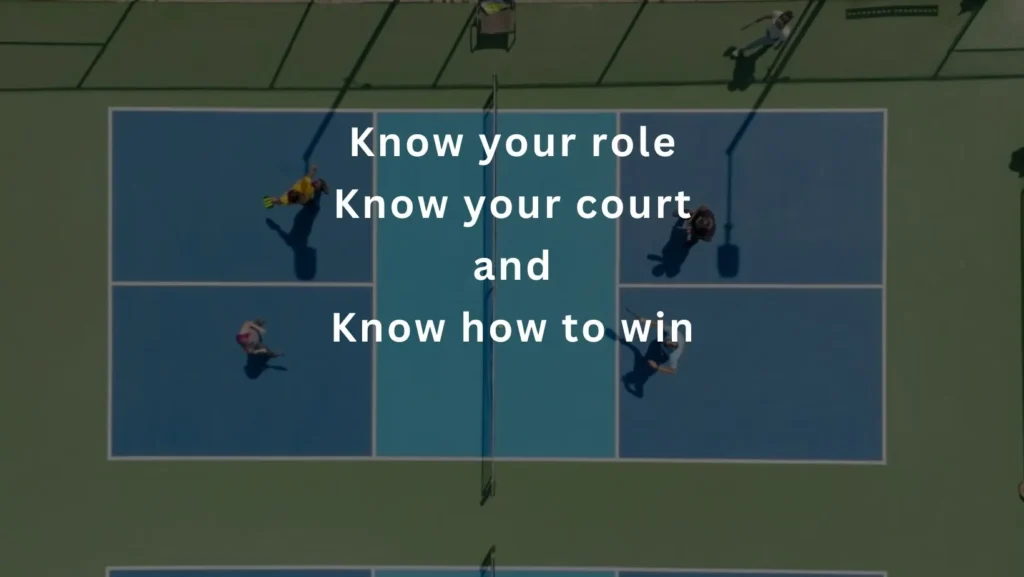
18. The Volley Lob
The volley lob is a shot that is used to counter a volley from your opponent, by hitting the ball high and deep over their head, making them retreat to the baseline. The volley lob can be either a forehand or a backhand stroke, depending on which side the ball comes to. The volley lob can be used for offensive or defensive purposes, depending on the situation and the intention of the shot. Here are some tips for integrating the volley lob into your strategy:
- Use the volley lob when your opponent is at the net, and you are in the non-volley zone, and you have a high ball that you can hit over their head. This will force them to back up and give you time to move forward and take control of the net.
- Use the volley lob when your opponent is at the net, and you are at the baseline, and you have a low ball that you can hit over their head. This will surprise them and make them scramble to get the ball.
- Use the volley lob when your opponent is at the net, and you are in the non-volley zone, and you have a low ball that you can hit over their head. This will create a high and weak return that you can smash or drop.
- Use the volley lob to hit the ball cross-court or down the line, depending on the position and movement of your opponent. You can also add some spin to the ball by brushing the paddle face over the ball, creating more curve and bounce. You can also vary the speed, direction, and placement of your volley lob to catch your opponent off guard and create an opening for your next shot.
The volley lob is a shot that can give you a tactical advantage over your opponent, by making them move and keeping them away from the net. However, the volley lob is not easy to execute and requires a lot of timing and accuracy.
If you hit the volley lob too high or too low, or too short or too long, you may give your opponent an easy shot to put away. Therefore, you need to practice the volley lob and use it wisely and sparingly.
19. Backhand Spin Dink
The backhand spin dink is a shot that is used to counter a dink from your opponent, by hitting the ball with a backhand stroke, with a spin, making it bounce low and slow in their non-volley zone. The backhand spin dink can be used for offensive or defensive purposes, depending on the situation and the intention of the shot. Here are some tips for unleashing the backhand spin dink:
- Use a continental grip for the backhand spin dink.
- Stand in a ready position, facing the net, with your feet shoulder-width apart and your knees slightly bent. Keep your paddle in front of your chest, with your non-dominant arm slightly bent and your dominant arm pointing towards the ball.
- Swing the paddle from high to low, with a smooth and fluid motion. Keep your eye on the ball and hit it with the bottom edge of the paddle face, with a downward and backward angle. Swing hard and fast, generating power and speed from your hips and shoulders.
- Follow through with your swing, extending your arm towards your target. Finish with your paddle below your waist and your body facing the direction of the backhand spin dink.
- Use the backhand spin dink to hit the ball with a spin, making it bounce low and slow in your opponent’s non-volley zone. You can also use the backhand spin dink to hit the ball cross-court or down the line, depending on the position and movement of your opponent. You can also vary the speed, direction, and placement of your backhand spin dink to create angles and openings for your next shot.
The backhand spin dink is a shot that can give you an offensive cross-court opportunity, by making your opponent move and reach for the ball. However, the backhand spin dink is not easy to execute and requires a lot of timing and accuracy.
If you hit the backhand spin dink too high or too low, or too short or too long, you may give your opponent an easy shot to put away. Therefore, you need to practice the backhand spin dink and use it wisely and sparingly.
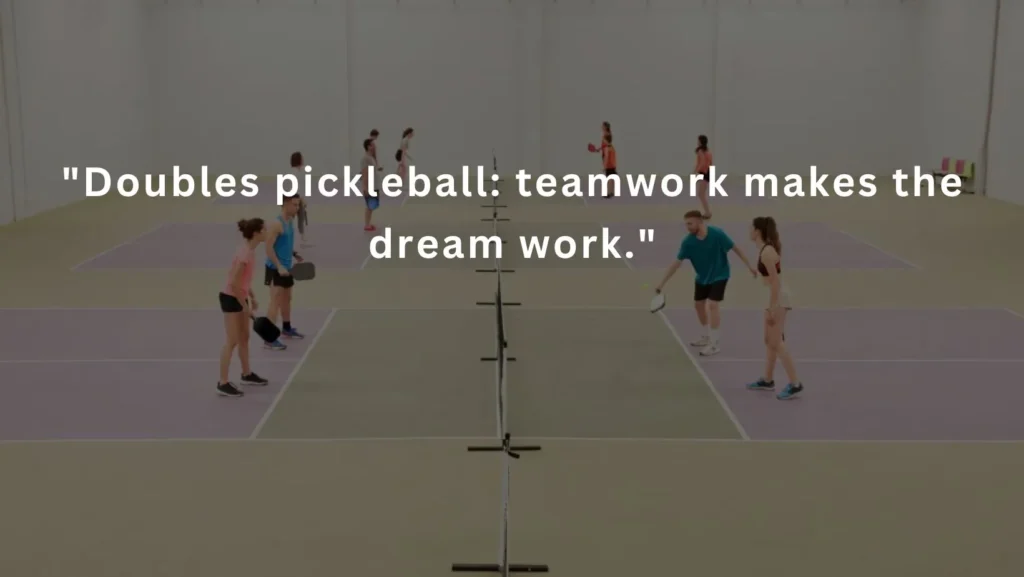
20. Topspin Roll Volley
The topspin roll volley is a shot that is used to counter a lob or a high ball from your opponent, by hitting the ball with a forehand stroke, with a topspin, making it bounce fast and low in their court. The topspin roll volley can be used for offensive or defensive purposes, depending on the situation and the intention of the shot. Here are some tips for utilizing the topspin roll volley:
- Use a continental grip for the topspin roll volley.
- Stand in a ready position, facing the net, with your feet shoulder-width apart and your knees slightly bent. Keep your paddle in front of your chest, with your dominant arm slightly bent and your non-dominant arm pointing towards the ball.
- Move quickly to position yourself under the ball, with your feet parallel to the baseline and your body facing the side of the court. Raise your paddle above your head, with your arm fully extended and your elbow slightly bent. Tilt your paddle face slightly downwards, so that the edge of the paddle is pointing towards the ball.
- Swing the paddle from high to low, with a downward and forward motion. Keep your eye on the ball and hit it with the top edge of the paddle face, with a steep downward angle. Swing hard and fast, generating power and speed from your hips and shoulders.
- Follow through with your swing, extending your arm towards your target. Finish with your paddle below your waist and your body facing the direction of the topspin roll volley.
- Use the topspin roll volley to hit the ball with a topspin, making it bounce fast and low in your opponent’s court. You can also use the topspin roll volley to hit the ball cross-court or down the line, depending on the position and movement of your opponent. You can also vary the speed, direction, and placement of your topspin roll volley to surprise your opponent and create pressure.
The topspin roll volley is a shot that can keep your opponents at their baseline, by making them deal with a fast and low ball. However, the topspin roll volley is not easy to execute and requires a lot of timing and accuracy. If you hit the topspin roll volley too high or too low, or too short or too long, you may give your opponent an easy shot to put away. Therefore, you need to practice the topspin roll volley and use it wisely and sparingly.
21. The Erne
The Erne is a shot that is used to surprise your opponent, by stepping into the non-volley zone, next to the net post, and hitting the ball before it bounces, either cross-court or down the line. The Erne can be either a forehand or a backhand stroke, depending on which side the ball comes to. The Erne can be used for offensive or defensive purposes, depending on the situation and the intention of the shot. Here are some tips for mastering the Erne shot:
- Use a continental grip for both forehand and backhand Erne shots.
- Stand in a ready position, facing the net, with your feet shoulder-width apart and your knees slightly bent. Keep your paddle in front of your chest, with your arm slightly bent and your other arm pointing towards the ball.
- Move quickly to position yourself next to the net post, on the same side as the ball, and step into the non-volley zone. Raise your paddle above your head, with your arm fully extended and your elbow slightly bent. Tilt your paddle face slightly downwards, so that the edge of the paddle is pointing towards the ball.
- Swing the paddle from high to low, with a downward and forward motion. Keep your eye on the ball and hit it before it bounces, with the center of the paddle face, with a steep downward angle. Swing hard and fast, generating power and speed from your hips and shoulders.
- Follow through with your swing, extending your arm towards your target. Finish with your paddle below your waist and your body facing the direction of the Erne shot.
- Use the Erne shot to hit the ball either cross-court or down the line, depending on the position and movement of your opponent. You can also add some spin to the ball by brushing the paddle face over the ball, creating more curve and bounce. You can also vary the speed, direction, and placement of your Erne shot to surprise your opponent and create an opening for your next shot.
The Erne shot is a shot that can surprise your opponent, by hitting the ball from an unexpected angle and position. However, the Erne shot is not easy to execute and requires a lot of timing and accuracy. If you hit the Erne shot too high or too low, or too short or too long, you may give your opponent an easy shot to put away. Therefore, you need to practice the Erne shot and use it wisely and sparingly.
22. Fake Dink Strategies
The fake dink is a shot that is used to deceive your opponent, by pretending to hit a dink shot, but instead hitting a fast and hard shot to their court. The fake dink can be either a forehand or a backhand stroke, depending on which side the ball comes to. The fake dink can be used for offensive or defensive purposes, depending on the situation and the intention of the shot. Here are some tips for enhancing your fake dink strategy:
- Use the fake dink when you are in the non-volley zone, and your opponent is also in the non-volley zone, and you have a high ball that you can hit over the net. This will make your opponent expect a soft and short shot, and prepare to move forward and dink back. However, you will surprise them with a fast and hard shot, and make them react quickly and give them less time to prepare.
- Use the fake dink when you are in the non-volley zone, and your opponent is at the baseline, and you have a low ball that you can hit over the net. This will make your opponent expect a fast and hard shot, and prepare to move back and block or drive back. However, you will surprise them with a soft and short shot, and make them scramble to get the ball.
- Use the fake dink to hit the ball cross-court or down the line, depending on the position and movement of your opponent. You can also add some spin to the ball by brushing the paddle face over the ball, creating more curve and bounce. You can also vary the speed, direction, and placement of your fake dink to surprise your opponent and create an opening for your next shot.
The fake dink is a shot that can outsmart your opponent, by hitting the ball from an unexpected speed and direction. However, the fake dink is not easy to execute and requires a lot of timing and accuracy. If you hit the fake dink too high or too low, or too short or too long, you may give your opponent an easy shot to put away. Therefore, you need to practice the fake dink and use it wisely and sparingly.
23. Bonus Shot – Around the Post (ATP)
The around the post (ATP) is a special shot that is used to counter a wide ball from your opponent, by hitting the ball around the net post, without touching the net, and making it land in their court. The ATP can be either a forehand or a backhand stroke, depending on which side the ball comes to. The ATP can be used for offensive or defensive purposes, depending on the situation and the intention of the shot. Here are some tips for attempting the ATP shot:
- Use the ATP when your opponent hits a wide ball that goes beyond the sideline, but still lands in the court. This will give you an opportunity to hit the ball around the net post, without touching the net, and make it land in their court. This will surprise them and make them unable to return the ball.
- Use a continental grip for both forehand and backhand ATP shots.
- Stand in a ready position, facing the net, with your feet shoulder-width apart and your knees slightly bent. Keep your paddle in front of your chest, with your arm slightly bent and your other arm pointing towards the ball.
- Move quickly to position yourself next to the sideline, on the same side as the ball, and step into the court. Raise your paddle above your head, with your arm fully extended and your elbow slightly bent. Tilt your paddle face slightly downwards, so that the edge of the paddle is pointing towards the ball.
- Swing the paddle from high to low, with a downward and forward motion. Keep your eye on the ball and hit it before it bounces, with the center of the paddle face, with a steep downward angle. Swing hard and fast, generating power and speed from your hips and shoulders.
- Follow through with your swing, extending your arm towards your target. Finish with your paddle below your waist and your body facing the direction of the ATP shot.
- Use the ATP shot to hit the ball around the net post, without touching the net, and make it land in your opponent’s court. You can also use the ATP shot to hit the ball cross-court or down the line, depending on the position and movement of your opponent. You can also add some spin to the ball by brushing the paddle face over the ball, creating more curve and bounce. You can also vary the speed, direction, and placement of your ATP shot to surprise your opponent and create pressure.
The ATP shot is a shot that can add variety and fun to your game, by hitting the ball in a creative and unexpected way. However, the ATP shot is not easy to execute and requires a lot of timing and accuracy.
If you hit the ATP shot too high or too low, or too short or too long, you may give your opponent an easy shot to put away. Therefore, you need to practice the ATP shot and use it wisely and sparingly.
Conclusion
Pickleball is easy to learn, but challenging to master. One of the keys to becoming a better Pickleball player is to master the various shots and strokes that are used in the game. In this article, we have provided you with a comprehensive guide to Pickleball shot names, techniques, and strategies.
We have covered the basics and the fundamentals, as well as some of the more advanced and specific shots that you can use to elevate your game and have more fun on the court. However, this article is not exhaustive and there are many more Pickleball shots that you can learn and practice.
The best way to improve your Pickleball game is to play regularly, practice diligently, and learn from your mistakes and successes. Pickleball is a sport that requires a lot of skill, strategy, and creativity, but also a lot of fun, enjoyment, and camaraderie.
We hope that this article has helped you to understand and appreciate the importance of shot variety in Pickleball, and inspired you to try new and different shots in your game.
Remember, the more shots you have in your Pickleball arsenal, the more options you have on the court, and the more fun you have on the court. So, go ahead and elevate your Pickleball game with these shot names, and have a blast!
